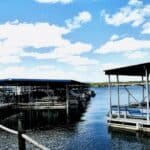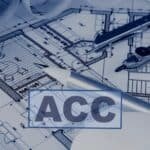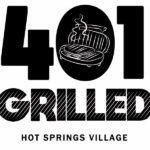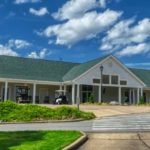This is part two of the Future Revenue Analysis Task Force presentation at the August 4, 2021 Board Discussion Session. Click here to read part one. Larry Siener addressed the Board and Community in the first part.
Options
August-4-2021-FRATF-Presentation-Slide-16Once the analysis was complete the task force turned its attention to developing courses of action in order to close the funding gap.
Hot Springs Village Revenue Sources
On the left-hand side of the chart below, you can see the make-up of 2021 assessments. Just less than half of revenues come from assessments and fees, around 29% comes from public works and 24% comes from amenities.
Just less than half of our revenues come from improved lots. Unimproved lot owners contribute more than half of assessment revenue. “Without the contributions of the unimproved Property Owners, Hot Springs Village would be in a much more precarious position.”
When amenity usage is factored in, unimproved property owners provide 25% of total revenue.
August-4-2021-FRATF-Presentation-Slide-17Options Concerns and Considerations
- Per our Declarations, the Southern Region Consumer Price Index (CPI) is used by the Board Directors to calculate a yearly increase. This increase does not keep pace with expense growth.
- Expense reductions, fee increases and other revenue ideas do not solve the problem. “Without an assessment change, you cannot get there from here.”
- Deferral of maintenance makes the problems worse.
- This leads to increased costs because of inflation.
- This causes unintended consequences (for example, if you don’t repair a roof, eventually it will leak leading to even more repairs).
Is This Problem Solvable? Yes. Below are the three options FRATF presented.
August-4-2021-FRATF-Presentation-Slide-18Option 1: Rapid Recovery
- This combines a series of adjustments to our revenue sources. Regular assessments on improved properties would increase from the current amount of $69.26 to $90.00 in 2022, $100 in 2023, and $110 in 2024.
- Unimproved property assessments would also increase from $39.97 to $43.00 in 2022, $46.00 in 2023, and $49.00 in 2024.
- Beginning in 2025, the regular assessment increases would return to the CPI-based formula. Historical CPI is 2.2% per year.
- While a special assessment could be combined with a regular assessment FRATF is not proposing both a regular and a special assessment at the same time in any of the options.
- The POA would institute a new HSV Property Owner buy-in fee of $1,500 per home sold and $250 per lot sold. This would only apply to NEW HSV PROPERTY OWNERS. If an existing homeowner decides to buy another lot, or another home, that fee would not apply because they are already a Property Owner. These fees would increase at the amount of $125 per year for improved property and $35 per year for unimproved property for three years.
- Amenity fees would increase $350,000 per year for a period of three years. There are many ways to get to this increase.
- The unit charges for water, sewer, and sanitation services would increase at a pre-planned increment. This equates to $3.77 per month in 2022 across all three of those unit charges.
- This option rapidly closes on our projected cost line (red blob and gray area on the previous chart).
- This option minimizes additional deferred maintenance. This revenue stream would nearly equal costs in 2023, which would allow us to work down our deferred maintenance backlog beginning in 2024.
- The new buy-in fee would initially generate about 18% of our needed additional revenue and would be borne by future new neighbors.
- There is a large drawback to this plan. The overall impact on improved property owners is significant in 2022 with a combination of assessments, and water/sewer/sanitation unit charges increasing about $24.50 per month. Regular assessments would increase nearly $21.00 and the additional utility charges of $3.77 would increase nearly $4.00 a month.
Option 2: Special Assessment
- The Board would increase the 2022 regular assessment at the rate of 5.8%, which is the 2022 Southern Region Consumer Price Index.
- Future regular assessments would continue to increase by the Southern CPI percentage.
- Using the historical data of an average Southern CPI increase of 2.2%, this is the equivalent of $1.61 per month for an improved property and $.93 per month for an unimproved property in 2023.
- Instead of a regular assessment increase, the Board would seek a vote to create a five-year special assessment for the purposes of performing Street Department work. This special assessment would be $22 per month for improved Property Owners and $11.00 for an unimproved Property Owner.
- The HSV buy-in fee would be implemented.
- The amenity increase is the same in Option 1.
- The unit charges for water/sewer/sanitation would still increase at a smaller pre-planned increment. This increase would be $2.06 in 2022.
- This plan has some advantages. Our revenue and cost projections align immediately. This means no additional deferred maintenance would be incurred and we would be in a position to “burn off some of the maintenance backlog” in the 2026 time frame.
- There would be no regular assessment increases other than the Southern CPI increase.
- From a revenue standpoint, this idea looks attractive for a little while.
- There are problems with this approach.
- The cost to all property owners is high.
- This does not solve the real problem which is that the Southern CPI increases do not keep up with expense growth.
- Once the special assessment expires, we drop right back into the problem of not having sufficient income to pay our expenses.
- We would like need another assessment vote when this expires.
- This approach establishes a behavior of using special assessment increases to pay day-to-day bills. This turns into a vicious cycle as we become dependent on the next special assessment, and so on.
- Reliance on special assessments is viewed negatively by prospective home buyers.
Option 3: Balanced Approach
- Regular assessments increase at a lower rate than presented in option 1. Improved Property Owners would see an increase to $79.00 a month in 2022, $89.00 a month in 2023, and $99.00 a month in 2024.
- Unimproved Property Owners would also see their assessments increase to $42.50 in 2022, $45.00 in 2023, and $47.50 in 2024.
- This is roughly an increase of $10.00 per month for improved Property Owners and a $2.50 increase per month for unimproved Property Owners per year for three years.
- In 2025 regular assessments would return to the Southern CPI-based increase.
- There would be NO special assessment.
- New HSV Property Owner buy in fee is the same as in the previous two options.
- Amenity fee increases are the same as in the previous two options.
- Public utility fees (water/sewer/sanitation) would increase at a rate between options 1 and 2. This would result in an increase in fees of about $3.43 per month in 2022.
- “This approach strikes a balance between the need to increase our revenues with a cost impact to Property Owners.”
- “Taking this more deliberate approach shifts the point projected revenues equal projected costs from 2022 or 2023 out to 2024.”
“The task force used this recovery timeline as acceptable.”
- “It has taken us quite a bit of time to get into this hole and it is going to take us a little bit of time to climb out.”
- “The downside to this approach is that we do increase the amount of deferred maintenance that we accumulate in 2022 and 2023.” “This will have to be worked off, starting in 2025.”
Comparison of Options – 2022 Monthly Impact
- Regular assessment impacts
- Option 1 places the most financial demand on all Property Owners, particularly in 2022.
- Option 2 minimizes the regular assessment increases in 2022 and on.
- Option 3 represents a middle ground between option 1 and option 2. This reduces the improved lot assessment increase versus option 1 by about $11.00 a month.
- Special Assessment
- The only option where a special assessment is a factor is option 2.
- This would dramatically increase the total assessment burden on all Property Owners for five years.
- New HSV Property Owner Buy-in Fee
- This is in all three options. This expense is not incurred by those who own property. There is no impact to current owners.
- Amenity Fee Impacts
- This will vary widely among Property Owners, depending on the amenities you use.
- Public Utility Fees increase as shown on the chart. This does not affect unimproved Property Owners.
Summary of Increases
* * *
Option 1 PRO – rapid recovery
Option 1 CON – high cost to improved Property Owners
The task force believes the chances of option 1 passing in a Property Owner vote is low.
* * *
Option 2 PRO – immediate recovery
Option 2 CON – high cost to ALL Property Owners
The task force believes the chances of option 2 passing in a Property Owner vote is very low.
* * *
Option 3 PRO – lowest cost option to ALL Property Owners
Option 3 CON – slowest recovery
* * *
August-4-2021-FRATF-Presentation-Slide-22The task force believes option 3 has the best chance of passing in a Property Owner vote. The task force believes option 3 to be a manageable increase in costs to Property Owners with an acceptable timeline for aligning projected revenues and projected costs.
What Happens if an Assessment Increase is NOT Approved by Property Owners?
FRATF feels that without an assessment increase, our future is grim. We would be millions of dollars a year short of what is needed to keep the village what it is today.
- Roads will decline.
- Culvert collapses will become much more common.
- Building maintenance would be delayed, increasing the chances of even more damage.
- Amenities would need to be closed and perhaps sold.
- Unpopular as outsourcing the police force is, the Board may have no choice but to pursue this option.
Summary
Moving forward without an assessment increase will have major impacts on the Village as we know it. We could lose amenity options, property values could go down, and we could lose our sense of security.
Recommendation
General Recommendations – Jeff Logren
August-4-2021-FRATF-Presentation-Slide-23- FRATF proposed Declaration changes
- It is essential that we obtain an affirmative vote for an assessment increase above the Southern CPI level, starting in 2027. This is the next time a Declaration change can take effect. Without this flexibility proected revenue growth will continue to lag. We will have to have to conduct another exercise of this type (FRATF evaluation) in 2029/2030.
- POA right to declare an area as unserved. This would provide the POA with a way to manage risk associated with having to provide roads and utilities services to areas where no one lives.
- FRATF proposed policy changes
- Establish policy related to funding earmarks and/or priorities to guide the POA staff in developing and executing the budget. This policy would essentially commit the Board to apply funding to those high-priority needs identified in the seven-year operations and maintence projections.
- Implement the Board implement an annual review of grade 12 and higher employees.
- FRATF proposed management/contracting changes
- Consider implementing performance-based management of certain employees
- Consider hiring professional contract specialist to ensure that the village obtains the best value in any contract arrangement.
- FRATF proposed revenue generation changes
- Board should consider authorizing Public Services to explore sales of water/wastewater to entities outside of the gates.
- Board should continue to encourage opportunities to remedy the lack of convention hosting facilities (lodging)
- Board should encourage establishment of the endowment fund or a donation process.
- FRATF proposed ‘other’ changes
- Investigation of short term rental property policies and explore if the collection of revenue should be pursued in this area.
- Assess 168 POA buildings and demolish those buildings which are not needed in order to reduce maintenance and support expenses.
FRATF Recommendation to Address Current Needs
As already stated, FRATF recommends option 3.
“It is the opinion of the task force this option provides the best balance of revenue recovery and cost impact to Property Owners.
“Big picture for this option. Improved Property Owners would see an increase of approximately $13.31 per month, per year for 3 years.
“Unimproved Property Owners would see an increase of around $2.53 per month per year for 3 years.
“Slight increases to those using amenities.
“While we do incur some additional deferred maintenance backlog with this option, we believe it is manageable long term, as with revised assessments rates, revenues that are realized from new rooftops and lot owners, coupled with a general recommendation for a Declaration change in 2027. This would enable us to keep pace with projected revenue alignment, with high-priority expense projections.
“In other words, the true needs of Hot Springs Village would be addressed, not necessarily the wants, going forward.
“We looked at numerous different options here. We presented 3 of them to you. We looked at all different spectrums of ideas to address our financial needs.
“We recommend that this option [option 3] is the best-balanced approach.
“We also looked at it from a Property Owner’s perspective, given the make-up of our own task force and discussions with people in the community.
“It was important to strike a balance of acting now to address the high priority needs that our financial analysis told us we needed to do with the impacts on Property Owners’ pocketbooks.
“As our community grows so will the needs of our community grow and this approach puts us on a path to sustain and maintain Hot Springs Village and keep our amenities viable.
“Actions by the Board will set the path for the coming years and lead us towards a fiscally sound Hot Springs Village.
“This is a solvable problem.
“We’d like to thank the Board for listening and also the listening audience to this long and lengthy briefing, we realize. This is an extremely important topic.”
August-4-2021-FRATF-Presentation-Slide-25Questions
August-4-2021-FRATF-Presentation-Slide-26Q – Pam Avila asked if there was a reason why FRATF didn’t go past 2027.
A – The 7-year financial budget protection that we work with with the F and P Committee and staff was only out to 2027. We did look at things that needed to go well beyond 2027. By using a rolling 7-year projection in the future, will help us understand the future outlook.
Q – Tucker Omohundro asked about ‘unknowns.’ We know there are ‘known unknowns,’ how do we plan for those?
A – The POA is doing a good job of building up the reserve funds. At the end of this year, we will be fully funded on our reserve funds. Also, the Board established capital improvement funds, which we have started to fund. Between those two funds, we have set aside funds to address an emergency situation. We also have a line of credit, if necessary.
Q – Gary Belair said the recommended approach indicates there is approximately $4 million additional deferred maintenance between 2022 and 2024. What did you use for an inflation factor?
A – This model is based on a 3% inflation rate going forward. This is a historical norm over the past ten or so years.
We will incur some additional deferred maintenance in 2022 and 2023 with option 3. We “think the professionals we have working in the POA staff can manage that currently. Does that mean we are not going to incur some problems going forward? Possibly, in those 2 years. I think we can manage those.” Then we can start to work down the deficit (deferred maintenance.)
Q – Pam Avila asked what the strategy behind stepping up the new owner buy-in fee year-by-year when we are currently in a significantly strong real estate market. Why couldn’t we ask for $1,750 now?
A – The answer is, ‘you could.’ That is the Board’s option.
Keith Keck said they had discussions with the realtors and know there are concerns from realtors with any extra fee. This is a standard fee in other places. The buy-in fee was a recommendation in 2014/2015 and it did not happen.
Q – Joanie Corry said she is glad there is a recommendation for establishing a policy relating to funding so that the money is used for what they are voting on. Is this correct?
A – That is correct. You will be signaling to the community a policy that describes your philosophy and how you plan to move forward with additional revenue which then translates to direction and guidance to the POA staff as they develop budgets.
Q – Joanie Corry stated she appreciates that FRATF provided the Board with facts and that the Board will be voting on facts and not emotions.
Q – Coreena Fetterhoff said with option 3 there is not a huge gap between revenue and expenses.
A – Even though it looks like there are excess funds available in the 2025/2026/2027 time frame, those funds will be used to cover what we didn’t take care of in the previous years.
Q – Tucker Omohundro said he thought the recommendation would be considerably higher than what it is. He said this is a positive statement.
A – Most people thought the numbers would be much higher. Option 3 represents the needs.
Q – John O’Brien says he and Christie are incredibly grateful for the enormous amount of side work the group has done to prepare this. It is a lot less than I thought it would be, also. Are the assumptions on the rate of unimproved properties based on total unimproved or the ratio of those who have actually been paying unimproved [assessments]?
A – The number of performing unimproved properties is based on December of 2020 figures. Since that time, we have 584 new performing properties.
Q – Ray Lehman asks if someone builds a home, will the difference between the lot buy-in rate and the home buy-in rate be collected at that time?
A – Tucker says that is the plan unless it is too complicated for the POA to deal with. This is our intention.
A- The Board will need to decide that if someone buys a lot and then later builds a house on the lot, will the additional buy-in fee be due. Also, the Board will need to decide if returning Property Owners (after they sold their property and they return to the Village) will have to pay the buy-in fee.
Q – Ray Lehman asked about properly ear-marking the funds to go where they should go. Will the Board or the POA write these policies?
A – Gary Belair said the Board writes policies. Staff executes.
Q – Ray Lehman said the Board is in the hot seat because we have a history of funds being misdirected for a decade or more.
A – Joanie Corry said she wouldn’t say the funds were misdirected, but rather they were directed on a different path.
The Board’s plan is to vote on this at the August 19, 2021, regular Board meeting.
Background material, presentations, and much more from FRATF are available on the ExploretheVillage.com website. Click here to access the FRATF page.
Thank you to the Task Force for the massive amount of hard work you put forth to compile this information. Also, thank you to the Property Owners for your suggestions and to the staff for all your hard work with this project. Also, much appreciation to the Board of Directors.
By Cheryl Dowden, August 5, 2021
* * *
Thank you for reading. If you like, please comment below. We love to hear your opinion, but comments must be made using your first and last real name, or they will not be accepted. If you would like to submit an article for publication, please contact us through this website. Be sure to bookmark this website. Click here to visit the Hot Springs Village People Facebook Group.












Brian Castleman
08/06/2021 — 9:51 am
The board needs to take responsibility to make certain that funds are actually used for what is budgeted for needs not for a want list. There should be consequences for diversion of budgeted funds to something not approved.
Sam Taylor
08/06/2021 — 6:50 pm
Yes they should, BUT each new board brings another whole set of whims about what they think should take place. I think a good analogy is the POA as a sailboat without a helmsman that goes wherever the wind (the board) takes it, and we know the wind is constantly changing! How do we get a helmsman at the helm of the sailboat to keep it on course for the long haul is the question.
Mrs. Katherine Miller
08/06/2021 — 10:37 pm
The recommended graph presented does not show a need for an assessment increase “above” the Southern CPI level “starting in 2027”. On the contrary, it shows revenue at $3 million above high priority expenses for 2027 by simply applying the standardized CPI increase starting in 2025.
Gene Garner
08/13/2021 — 10:47 am
The FRATF really needs to talk with an attorney before recommending some of their options. For instance a “buy-in fee” conflicts with an Arkansas statute ACA 18-12-107 titled “Transfer Fee Covenants Prohibited”.
This same type fee was attempted once before by Twiggs (former G.M.) but abandoned when he was made aware of the above statute.—Gene
HSVP C
08/13/2021 — 11:46 am
2014 Arkansas Code
Title 18 – Property
Subtitle 2 – Real Property
Chapter 12 – Conveyances
Subchapter 1 – General Provisions
§ 18-12-107 – Transfer fee covenants prohibited.
Universal Citation: AR Code § 18-12-107 (2014)
(a) As used in this section:
(1) “Association” means a nonprofit, mandatory-membership organization:
(A) Comprised of owners of homes, condominiums, units in a horizontal property regime, cooperatives, manufactured homes, or any other interest in real property; and
(B) Created pursuant to declaration, covenant, bill of assurance, master deed, or other applicable law;
(2) “Licensee” means a licensee as defined in § 17-42-103;
(3) “Transfer” means the sale, gift, grant, conveyance, assignment, inheritance, or other transfer of an ownership interest in real property located in this state;
(4) (A) “Transfer fee” means a fee or charge that obligates a transferee or transferor of real property to pay a fee or charge to a third person:
(i) Upon a transfer of an interest in the real property; or
(ii) For permitting the transfer.
(B) “Transfer fee” does not include a tax, assessment, fee, or charge imposed by a governmental authority under applicable law; and
(5) (A) “Transfer fee covenant” means a provision in a recorded document or an unrecorded document imposing a transfer fee that purports to run with the land or bind current owners or successors in title to real property located in this state.
(B) “Transfer fee covenant” includes a lien or claim of lien to secure payment of a transfer fee.
(C) “Transfer fee covenant” does not include a provision:
(i) Of a purchase contract, option, mortgage, security agreement, real property listing agreement, or other agreement that obligates a party to the agreement to pay another party to the agreement as full or partial consideration for the agreement or for a waiver of rights under the agreement an amount determined by the agreement if the amount is:
(a) Payable on a one-time basis only upon the next transfer of an interest in the specified real property and, once paid, shall not bind successors in title to the property;
(b) A loan assumption fee or other fee charged in connection with a transfer by a lender holding or obtaining a lien on the transferred real property; or
(c) A fee or commission paid to a licensee for services rendered in connection with a transfer of the property for which the fee or commission is paid;
(ii) In a deed, memorandum, or other document recorded for the purpose of providing record notice of an agreement described in subdivision (5)(C)(i) of this section;
(iii) Of a document requiring payment of a fee or charge to an association to be used exclusively for the purposes authorized in the document, as long as no portion of the fee is required to be passed through to a third party designated or identifiable by description in the document or another document referenced in the document; or
(iv) Of a document affecting real property that requires payment of a fee or charge to an organization described in § 501(c)(3) or § 501(c)(4) of the Internal Revenue Code as it existed on January 1, 2011, to be used exclusively to support:
(a) Cultural, educational, charitable, recreational, environmental, conservational, or other similar activities benefiting the real property; or
(b) The community in which the property is located.
(b) (1) A transfer fee covenant recorded with respect to real property in this state after July 27, 2011:
(A) Does not run with the title to the real property; and
(B) Is not binding upon or enforceable at law or in equity against:
(i) The real property; or
(ii) A subsequent owner, purchaser, or mortgagee of an interest in the real property.
(2) This section does not validate a transfer fee covenant recorded in this state before July 27, 2011.
https://law.justia.com/codes/arkansas/2014/title-18/subtitle-2/chapter-12/subchapter-1/section-18-12-107/
Gene Garner
08/15/2021 — 8:08 am
There’s a lively discussion on Facebook concerning “transfer fees” ;
https://www.facebook.com/groups/HSVPeople/permalink/2878385092475914/?comment_id=2878551982459225
There’s also a lawsuit decided by the AR Supreme Court, Dye v. Diamante 510 S.W.3d 759 (2017)
2017 Ark. 42, that addresses the very subject;
“I. Transfer Fees
The appellants argue in their first point that the circuit court erred in holding that the transfer fee contained in the Declarations is not a violation of Ark. Code Ann. § 18-12-107. The statute provides, “A transfer fee covenant recorded with respect to real property in this state after July 27, 2011, [d]oes not run with the title to the real property; and [it] [i]s not binding upon or enforceable at law or in equity.” Ark. Code Ann. § 18-12-107(b)(1)(A)-(B) (Repl. 2015) (internal marks omitted). The statute further specifically states, “[t]his section does not validate a transfer fee covenant recorded in this state before July 27, 2011.” Ark. Code Ann. § 18-12-107(b)(2) (Repl. 2015).
Here, the Declarations were properly recorded in Saline County in 1997, long before July 27, 2011. Further, the Declarations clearly impose a transfer fee whenever any of the lots are sold. The statute destroys a contractual right to apply transfer fees to property, and is therefore not remedial or procedural. The appellants argue that the statute grants the court discretion to declare invalid any transfer fees that were created before the act. However, the statute by its very terms does not specifically invalidate transfer fees recorded before the act. Therefore, we hold that the court did not err in declaring the transfer fees enforceable.”
Again I’m no attorney but I read this as “Here, the Declarations were properly recorded in Saline County in 1997, long before July 27, 2011….. Therefore, we hold that the court did not err in declaring the transfer fees enforceable.”
So if our Declaration contains a statement, recorded before July 27, 2011, that transfer fees are applicable (it doesn’t) then the POA can collect them. By the way Diamante was represented by Rose Law Firm in this case in 2017.—Gene